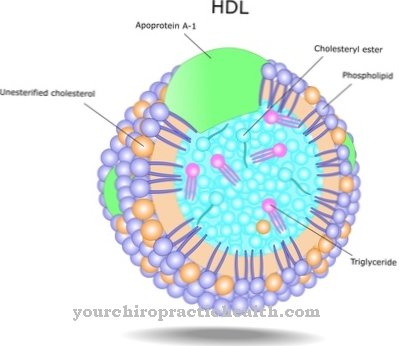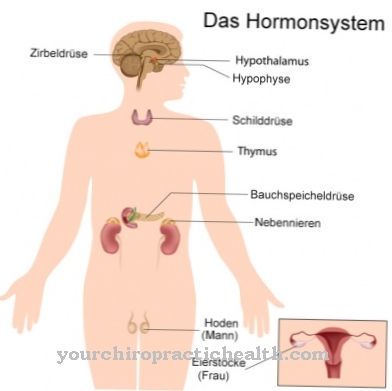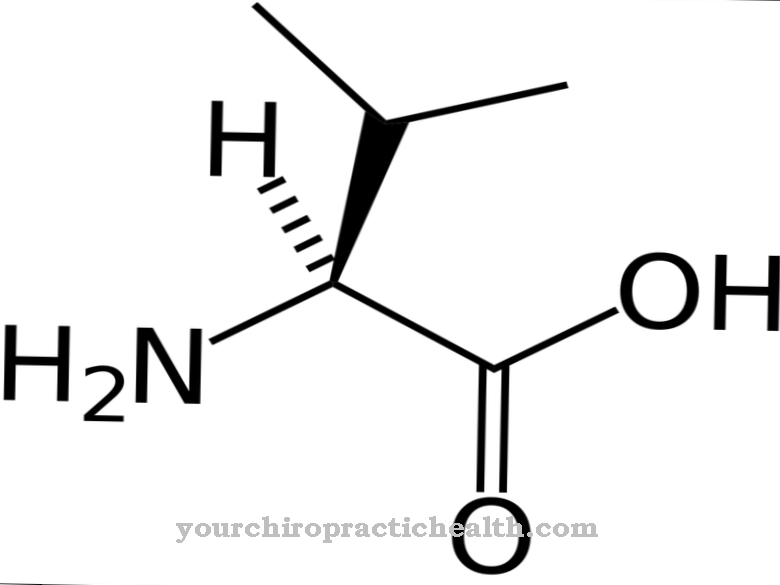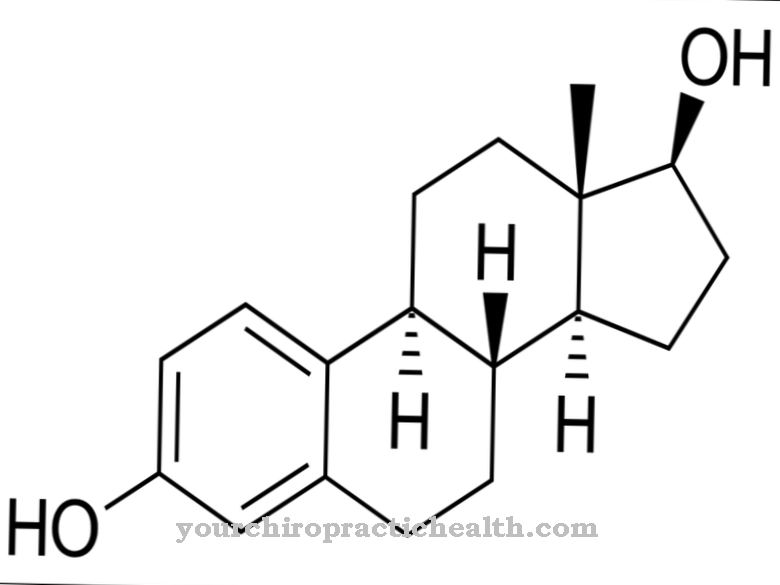Cytosine is a nucleic base that is a building block of DNA and RNA. The genetic code of every living being is made up of it and three other nucleobases.
What is cytosine?
The exact chemical name of cytosine is 4-amino-1H-pyrimidin-2-one, since the amino group of the nucleic base is in the fourth standard position of a pyrimidine framework. Pyrimidine is a molecule whose structure forms a six-membered ring with two nitrogen atoms.
An oxygen atom occupies the second position. Pyrimidine is an inorganic particle; it serves as the basis for numerous other constructs such as cytosine, in which it represents an important building block. Cytosine is only partially soluble in ethanol and water. Its normal physical state is solid, the melting point is 320 to 325 ° C. This makes cytosine one of the more robust chemical compounds.
The nucleobase in its pure form must be labeled with the hazard label “irritant” because it can irritate the mucous membranes and cause inflammation. However, cytosine only triggers this reaction in unnatural concentrations that do not occur in nature and are only produced by artificial biochemical synthesis.
Function, effect & tasks
Cytosine is one of the four nucleic bases which, together with sugar molecules, form DNA (deoxyribonucleic acid) and the similar RNA (ribonucleic acid). Cytosine thus plays an important role in the storage of hereditary information, which is responsible for the control of cells and heredity.
The DNA consists of long chains of so-called nucleotides. In order for the cytosine building block to become a nucleotide, it must combine with other building blocks. The nucleotide consists of a sugar molecule, a phosphate acid and a base. In human DNA, the sugar molecule is a so-called pentose; the name pentose refers to the pentagonal structure of sugar. Special enzymes read the DNA in the cell nucleus and make a copy that gets out of the nucleus. There it is read again by other enzymes and translated into proteins.
Biology therefore also calls this process translation. During translation, the enzyme responsible selects the right protein molecule for each code, which consists of three base pairs, and creates long chains from it.Cytosine, together with guanine, another nucleic base, forms a so-called base pair. The two DNA building blocks can form a connection with each other like two pieces of a puzzle - but not with the other two nucleobases, thymine and adenine. Cytosine and guanine combine with the help of a hydrogen bond and can dissolve them again by splitting off hydrogen.
Thymine is also a pyrimidine base that is created on the basis of the six-membered ring. All living things share these basic principles of inheritance and are based on the same basic genetic material. Only the sequence of the base pairs decides which organism emerges from the genetic code, which shape it has and which functions it can perform.
Education, Occurrence & Properties
Cytosine arises from pyrimidine. This substance is a six-membered ring with two nitrogen atoms. An NH2 group and a single oxygen molecule with a double bond are attached to the pyrimidine with a single bond. In addition, a hydrogen atom attaches itself to one of the two nitrogen atoms of the pyrimidine ring. The natural sciences distinguish between two forms of cytosine, the tautomers.
In addition to the H1 tautomer, there is another form of cytosine, the 3H tautomer. The H1 tautomer and the H3 tautomer differ from one another in that the various additional groups attach to different positions on the pyrimidine ring. The H1 variant occurs more frequently. There is no optimal value for cytosine; How often cytosine occurs in the human body depends on various factors. However, since it is in the nucleus of every single cell, it is very common.
You can find your medication here
➔ Medicines for muscle weaknessDiseases & Disorders
Cytosine is a building block of DNA and is determined by its place in the sequence of the genetic code together with three other bases about the basic mechanisms of life. A life without cytosine is therefore not possible.
If, for example, there were not enough basic substances available during a very early phase of pregnancy from which the cytosine is formed, further development of the embryo would not be possible even at the stage of individual cells. A complete absence of cytosine in a living organism is therefore unthinkable. Cytosine is made up of atoms that are very common. A deficiency as a result of poor nutrition is therefore extremely unlikely. The body cell can exchange cytosine like all other bases by mistakes in copying the DNA (transcription) for another base.
This is a mutation in which the enzymes within the cells form the wrong protein chains. These proteins are not functional or functional only to a limited extent or achieve a different effect than intended. This disrupts the regular processes of the organism. In the case of myoadenylate deaminase deficiency (MAD deficiency or MADD), for example, the genetic code of the AMPD1 gene is flawed. Cytosine should actually be at position 34 of exon 2; but due to a genetic defect, this position is incorrectly occupied by the nucleotide thymine.
This small change has drastic effects: the code now signals “stop” at this point, which is why the enzymes only synthesize an incomplete protein during translation. As a result, a metabolic disorder of the skeletal muscles manifests itself in MADD. It causes muscle discomfort such as cramps, weakness and pain.



























